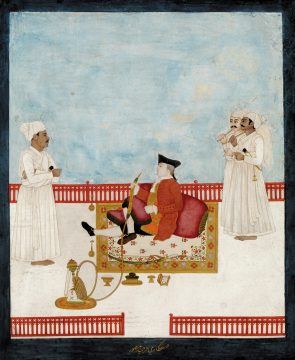Christopher de Bellaigue in the New York Review of Books:

In the eighteenth century a career with the East India Company was a throw of the dice for unattached young British men. Arriving in India wan and scurvy after a year at sea, many quickly succumbed to disease, madness, or one of the innumerable little wars that the company fought in order to embed itself on the subcontinent. The salary was hardly an incentive. In the 1720s junior clerks, or “writers,” received just £5 per year, not enough to live on in Bengal or Madras and a pittance when set against the handsome 8 percent annual dividend the company’s shareholders awarded themselves back in London. Such drawbacks tended to put off all but those whom circumstances had already disfavored: second sons, members of the down-at-heel Anglo-Irish gentry, dispossessed Scottish landowners who had backed the losing side in a rebellion against the crown.
Being on the company payroll was rather a means to an end; moonlighting was where the money lay in one of the richest places on earth. In 1700 India is estimated to have accounted for 27 percent of the world economy and a quarter of the global textile trade. A considerable number of company employees who survived the shock of arrival went on to make fortunes from off-books trading in textiles, saltpeter, indigo, opium, salt, tobacco, betel, rice, and sugar; sidelines also included selling Mughal-issued tax exemptions and lending money to distressed Indian grandees.
More here.
